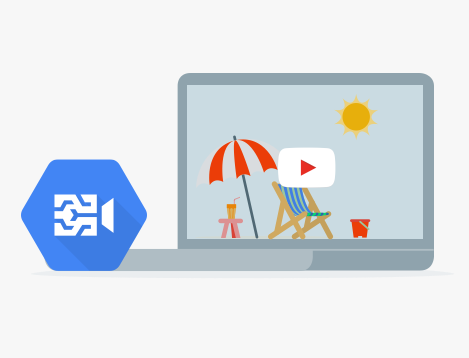 CLOUD
CLOUD
 CLOUD
CLOUD
 CLOUD
CLOUD
Google LLC is moving forward with its effort to help developers add more layers of intelligence into their software applications, announcing general availability of two new machine learning services.
The new releases pertain to Google’s Cloud Video Intelligence and Cloud Natural Language Content Classification. In a blog post, Google engineers Wei Hua and Apoorv Saxena explained that the former is a machine learning application programming interface that’s designed to analyze video content, while the latter is an API that helps classify content into more than 700 different categories.
Google Cloud Video Intelligence was launched in beta last March, and it has since been fine-tuned for greater accuracy and deeper analysis. A large part of this work involved labeling more than 20,000 different objects so that the API can automatically detect and classify content depicted in videos, the engineers said. This is important because machine learning models need to know exactly what it is they’re looking at in order to analyze video content properly. Labeling and training is an extremely time consuming process however, which is why Google has done much of the leg work itself.
With the update, Cloud Video Intelligence can now identify 180 different kinds of fruit, 229 airplane models, 667 cars and more than 200 different kinds of buildings, including convention centers and supermarkets, the engineers said.
Cloud Video Intelligence’s most useful application is for searching through vast libraries of video content. Google cites the example of Incentro, a service provider that builds systems for media and publishing firms. Incentro used Cloud Video Intelligence as the foundation of its new Segona Media application, which is used to store, tag and index videos, audio files and images, and retrieve this content much faster than was previously possible.
“Google Cloud Video Intelligence is fast and allows our clients to store and index a video in under 20 percent of the time it took with previous solutions,” said Kees van Bemmel, managing director at Incentro Cloud.
Cloud Video Intelligence also comes with a new video transcription feature in beta, which does pretty much what one would expect. The feature currently only works with English language content, but Google says it will add additional languages soon.
Meanwhile, Google’s Content Classification for Cloud Natural Language service is designed for text-based content. Announced in September, its main job is to read through texts and categorize them appropriately, and Google reckons it can do so with great accuracy. Hua and Saxena said in their blog post that the API can be used to sort documents into more than 700 different categories, such as arts and entertainment, hobbies and leisure, law and government, news and many more.
Google said the API is designed for media firms looking to get deeper insights from their libraries of content. The service will enable them to do things such as recommend content to individual users based on their preferences, history and the like, and also generate additional insights for advertisers.
Support our open free content by sharing and engaging with our content and community.
Where Technology Leaders Connect, Share Intelligence & Create Opportunities
SiliconANGLE Media is a recognized leader in digital media innovation serving innovative audiences and brands, bringing together cutting-edge technology, influential content, strategic insights and real-time audience engagement. As the parent company of SiliconANGLE, theCUBE Network, theCUBE Research, CUBE365, theCUBE AI and theCUBE SuperStudios — such as those established in Silicon Valley and the New York Stock Exchange (NYSE) — SiliconANGLE Media operates at the intersection of media, technology, and AI. .
Founded by tech visionaries John Furrier and Dave Vellante, SiliconANGLE Media has built a powerful ecosystem of industry-leading digital media brands, with a reach of 15+ million elite tech professionals. The company’s new, proprietary theCUBE AI Video cloud is breaking ground in audience interaction, leveraging theCUBEai.com neural network to help technology companies make data-driven decisions and stay at the forefront of industry conversations.